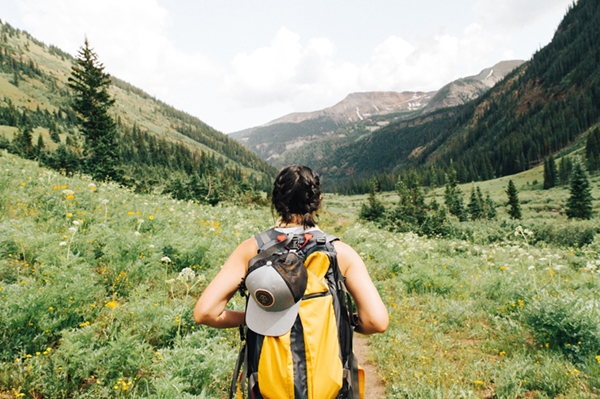Pesky Summer Plants to Avoid
Jun 7, 2022

We’re fortunate to live in the gorgeous Pacific Northwest, where we’re surrounded by lush forests, impressive mountains and winding rivers. It’s easy to get a daily dose of vitamin N (nature), which is good for mental and behavioral health as well as your heart.
Heading outdoors is one of the best ways to get exercise and stay healthy this summer while having a little fun and exploring all the beauty Oregon has to offer.
Staying safe this summer
Whether you’re hiking on Mount Hood or adventuring to a secluded swimming hole this weekend, Adventist Health Portland’s primary and urgent care providers encourage folks to stick to the trail and to stay safe. That includes protecting yourself from the sun and heat, especially during late summer, when temperatures in the Portland metro area will soar to their highest degree.
But while we regularly hear about sun safety or staying safe around the water, we often forget about the dangers lurking along the path to the secluded lake. Trouble could be quietly tucked by the fallen tree we stop to rest against.
Are we talking about a dangerous animal or venomous spider? No, just pesky poisonous plants.
Running into poison oak or stinging nettle could turn your afternoon adventure into an itchy, burning nightmare. Being able to identify these plants is an important way to help you, your family and your friends stay safe and comfortable this summer.
Seven poisonous plants to watch out for
Poison oak
This poisonous shrub has wavy leaves with a velvety texture that grow in clusters of three. Just like poison ivy and poison sumac, when the shrub is damaged or irritated it releases urushiol, an oil that leads to itching and a rash. For some it can even lead to blisters. During the end of summer, poison oak leaves will turn orange or red.
Western poison ivy
Poison ivy is shiny and has toothed leaves that grow in clusters of three. It typically grows from a vine, but it can also grow from a shrub, similar to poison oak.
Giant hogweed
This nasty invader has been popping up around the Northwest and injuring people with its sap, which causes skin sensitivity to the sun’s radiation. This in turn leaves people with severe burns. Giant hogweed looks a lot like Queen Anne’s lace but towers as much as 20 feet high and has huge, jagged leaves around the base of the stalks.
Stinging nettle
This plant’s heart-shaped leaves are covered in sharp, tiny hairs tipped with acid and chemicals that sting or burn when they puncture the skin. Steer clear of this venomous plant and the pain it can inflict. One sting from its leaves won’t soon be forgotten, and next time you’ll take the long way around.
Queen Anne’s lace (wild carrot)
Don’t be fooled by this plant’s lacy, white flowers and prickly green stalks covered in small green hairs. While the flowers are pretty, a run-in with this trickster can cause skin irritation and rashes, especially for people with sensitive skin. Another notable identifier of Queen Anne’s lace is that when crushed, this deceptive plant gives off an aroma of carrots.
Poison hemlock
Identified by its umbrella-shaped clusters of white flowers and hairless stalks with purple blotches, do what you can to avoid this toxic plant. Ingesting any part of this plant can lead to burning, nausea, vomiting and confusion. This dangerous plant bears a striking resemblance to wild carrot root, fennel and parsley. Remember, the best way to know the difference when identifying poison hemlock is the stalks, which will be hairless and spotted.
Deadly nightshade
This plant is as deadly as its name. Humans and animals should avoid this plant’s bell-shaped purple flowers, deadly roots and toxic berries. Deadly nightshade—also called belladonna—can be particularly dangerous for children and dogs, who can be drawn to its shiny, blackberries. As few as two berries can kill a child.
How to handle rashes and poisonings
Mild rashes like those from poison oak and stinging nettles can typically be treated at home by washing with soap and cool water to remove all the oils and applying a little hydrocortisone cream to help with itching. Be sure to also wash exposed clothing well.
“Rashes can be more severe and need medical attention,” says Easley. Signs you should come to urgent care include:
- A rash covering or spreading to most of your body
- Itching that doesn’t improve with over-the-counter options
- Difficulty breathing or swallowing
- Extreme swelling or blisters that have pus
- Fever above 100F
You should also get medical treatment if your rash lasts more than a few weeks.
Ingesting poisonous plants isn’t something you can treat at home safely. “If you or someone around you ingests a toxic plant like deadly nightshade or poison hemlock, get to the emergency room as soon as possible,” warns Easley.
A safe and healthy hike
Getting outdoors is a great way to spend time. Activity is good for your body while time in the natural world has myriad benefits for your mind and spirit. A little knowledge about poisonous plants and planning ahead can go a long way toward making sure your hikes are healthy and safe.
If you make a mistake and run into one of nature’s noxious flora, Adventist Health Portland’s urgent care clinics are ready to help.
Related articles

The Gut-Brain Connection: How Your Mental Health Affects Your Gut Health
February 6, 2024

Gut-Healthy Foods: Eating for Your Digestive Health
February 6, 2024

How Looking After Yourself Benefits Your Whole Family
February 5, 2024